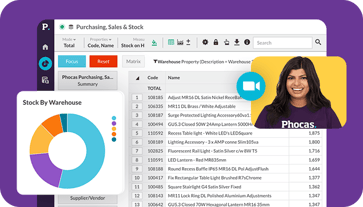There seems to be a little confusion between reporting and how it compares to analysing data in a slice and dice style of analysis.
Reports typically use a predefined layout with selection criteria that will query the live data source to return results in the predefined layout. You can usually have a few selection criteria like date range and maybe a data type filter. These reports are usually rigid and don’t allow you to pull any more data than was built into the original design of the report.
While these reports can be limiting, they can also be useful when looking at financial reports such as balance sheets and profit and loss statements. This is because the types of questions these reports are built to answer are at a summary level and don’t require too much detail. But if you are wanting to use fixed reports to analyze sales, you may find yourself answering one question with one report and having another question that requires you to open a different report. That answer leads to another question and you find yourself running lots of different reports to get close to the data you are after. You may still not be there as the fixed reports you are running are typically built by an IT person who does not always understand the types of questions you as a sales person may wish to answer.
This is where analysing data may work better for you as opposed to fixed reports. And the reason is that when you analyse data, you can change your question and follow your chain of thought without ever having to know what fixed report has the answer you are after.
For example, we may want to look at sales vs budget by Sales Representative this financial year-to-date. At this point, there may be four reps that are below budget so we change our time period to the current month. Now only two reps are greater than 20% behind budget, so where to from here? Maybe we want to see how these reps are going against this month vs last month in sales and then break that down by our product groups to find the lines that they struggle with and then change our measure to be GP% instead of sales value.
This type of adhoc slice and dice is best achieved when you are looking at your data in an analyst tool as opposed to fixed reports.
So while there is a need to always have reports (especially when we are talking about financial reports and reports to stake holders), if you want to ask plenty of questions of your data and change your direction as you are drilling in, then a slice and dice style of analysis may better suit your needs.
To see Phocas in-action, watch our demo video






